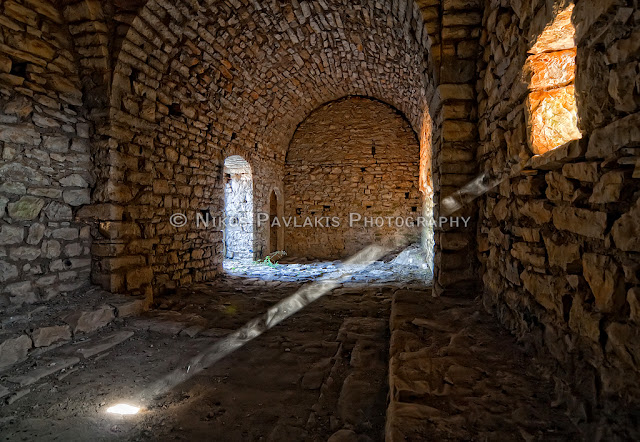 The upper monastery of Voulkanos is located at the top of Mount Ithomi, built where it used to be the sanctuary of Zeus Ithomatas. It is said that the establishment of the monastery happened by monks running away from the iconoclasts and it is currently uninhabited. The summers it is base observatory of the area by volunteers watching out for fires. Except that and the wake of 14th of August with the transportation of Virgin Mary icon by foot from the upper to the lower monastery, few people visit the area throughout the year.
The upper monastery of Voulkanos is located at the top of Mount Ithomi, built where it used to be the sanctuary of Zeus Ithomatas. It is said that the establishment of the monastery happened by monks running away from the iconoclasts and it is currently uninhabited. The summers it is base observatory of the area by volunteers watching out for fires. Except that and the wake of 14th of August with the transportation of Virgin Mary icon by foot from the upper to the lower monastery, few people visit the area throughout the year.
The road to the monastery starts after Mavromati village, when driving towards the new monastery to the left and it is not paved, while it passes inside the walls of Ancient Messini by the end. The road is very steep at the last few meters and not many cars can get to the top without difficulty. The rest can be left in an alley just before the walls, about 300 meters from the top.
For a local guy, I have been to the place very few times, but I can still remember the calmness of the area in addition to the vast view from the monastery. The constructions are elemental with small windows and doors you have to bend enough to get inside, obviously to keep cold out and they are built entirely with stone bricks. Almost all buildings are saved, but the inside of them is empty except from the church, which is locked.
I can't begin to imagine what the life was like up there, but I am sure that the monastic way of life is a very hard way of life. The nearest village for supplies is Mavromati, a long enough walk from the monastery. When the weather conditions are hard with the lightnings and the thunders clamping around and near the monastery, one feels really cut off from the world and very exposed to nature's elements.

On the other side, the hot summers and the unbearable heat of the area would be impossible to keep anyone to this spot had it not been for the well on the left and down side of the monastery. The weird thing about it, is that the well has constantly water besides being on a mountain, while the surrounding taller mountains are far away from there. Whatever the cause of this, the visitor cannot but admire the persistence of those that lived in the buildings and just try to imagine the difficult conditions under which they survived.










